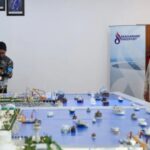Singapore Plans Two New Rail Lines for Potential Launch in 2040s
The Land Transport Authority (LTA) is currently conducting feasibility studies for two proposed new rail lines in Singapore, the Seletar Line and Tengah Line. These lines are projected to be operational sometime in the 2040s, pending the completion of the studies. The announcement of these plans was made by Transport Minister Chee Hong Tat during a parliamentary session on 5 March.
Improvements in Connectivity and Rail Reliability Investment
The introduction of the Seletar Line and Tengah Line is expected to bring about significant improvements in the overall connectivity of Singapore’s public transportation network. These new lines aim to enhance accessibility for residents and commuters, particularly in areas that are currently underserved by existing transport options.
In addition to the connectivity benefits, the government has also allocated a substantial investment of S$1 billion towards improving rail reliability. This investment underscores the commitment to ensuring a robust and efficient rail system for the growing population of Singapore.
Feasibility Studies and Future Developments
The feasibility studies being conducted by the LTA will assess various factors such as ridership projections, cost-effectiveness, and potential environmental impacts of the new rail lines. These studies are crucial in determining the viability and optimal design of the Seletar Line and Tengah Line.
Once the feasibility studies are complete and the necessary approvals are obtained, detailed planning and construction work for the new rail lines will commence. The timeline for the completion of these processes will ultimately determine the exact launch date of the Seletar Line and Tengah Line in the 2040s.
Public Reaction and Stakeholder Engagement
The announcement of the proposed new rail lines has garnered mixed reactions from the public and various stakeholders. While many welcome the potential improvements in connectivity and transportation infrastructure, some have raised concerns about the timeline for the project and the need for thorough consultation with affected communities.
It is crucial for the government and relevant authorities to engage in open dialogue with residents, businesses, and other stakeholders throughout the planning and implementation stages of the new rail lines. This will ensure that the project takes into account the diverse needs and considerations of all parties involved.
Conclusion
The proposed Seletar Line and Tengah Line represent significant developments in Singapore’s public transportation landscape, with the potential to enhance connectivity and accessibility for residents across the island. As the feasibility studies progress and plans for the new rail lines take shape, it is essential for the government to maintain transparency and engage in constructive dialogue with the community to address any concerns and ensure a successful implementation of these vital infrastructure projects.
Source
This article is written in response to original article.








